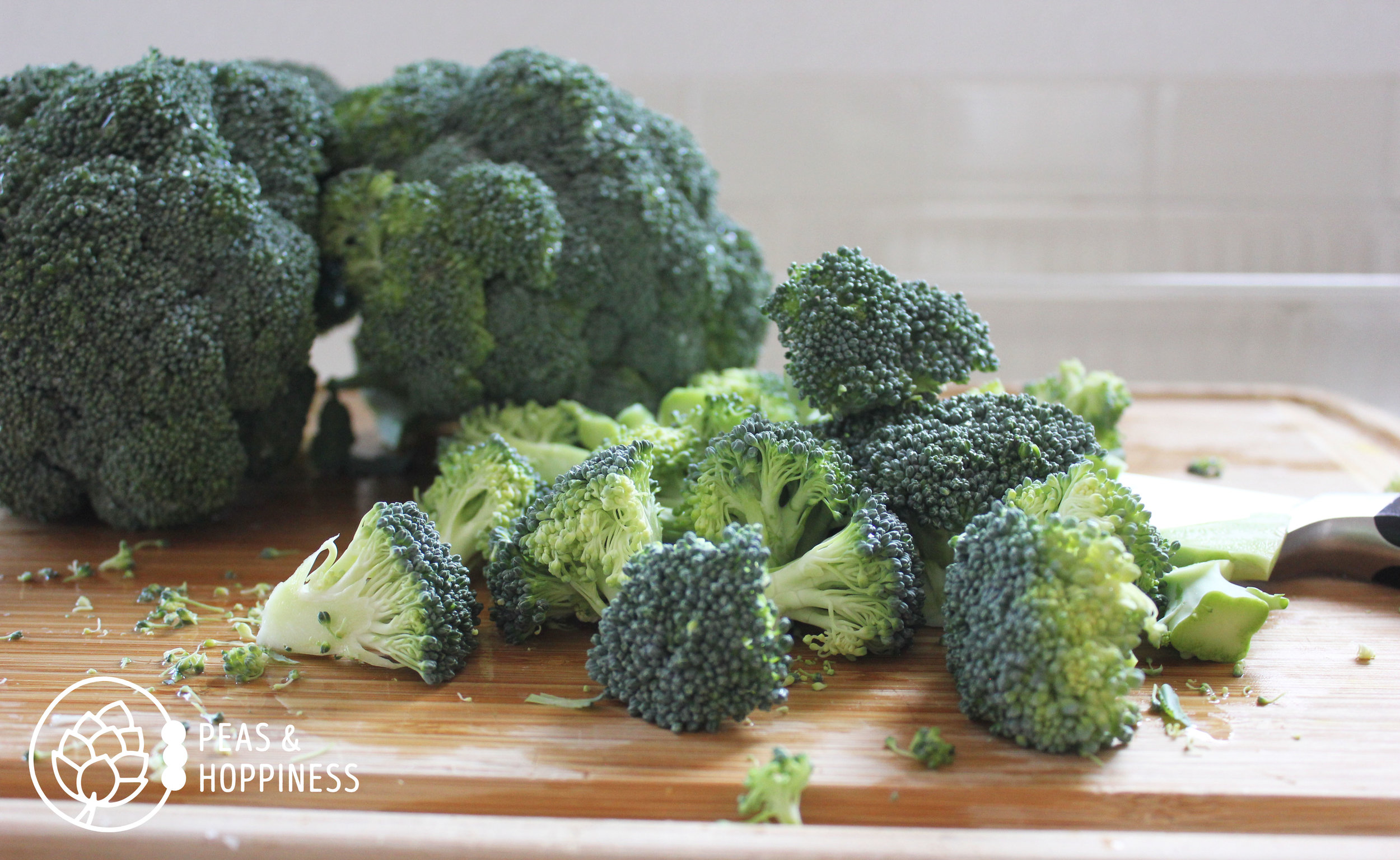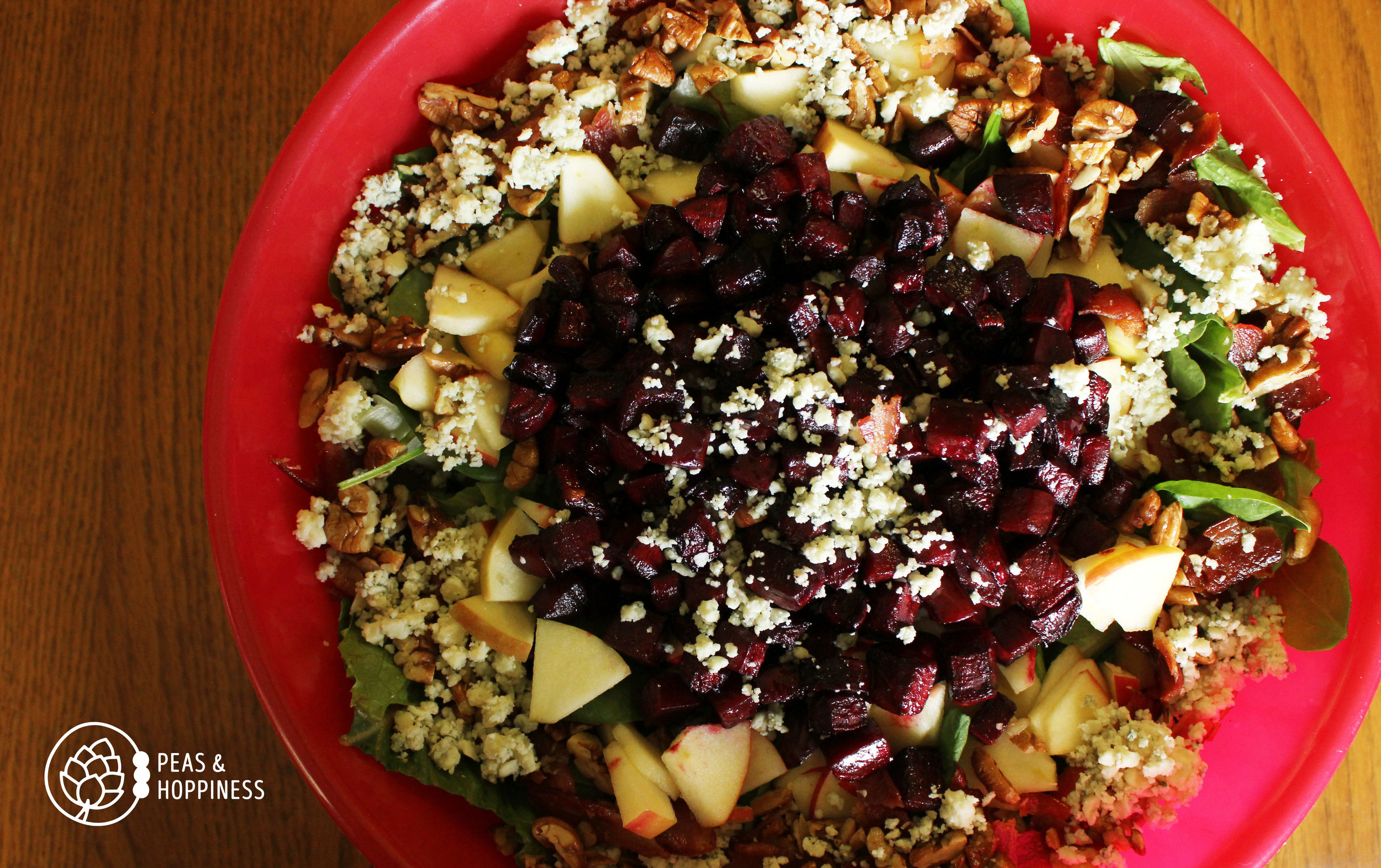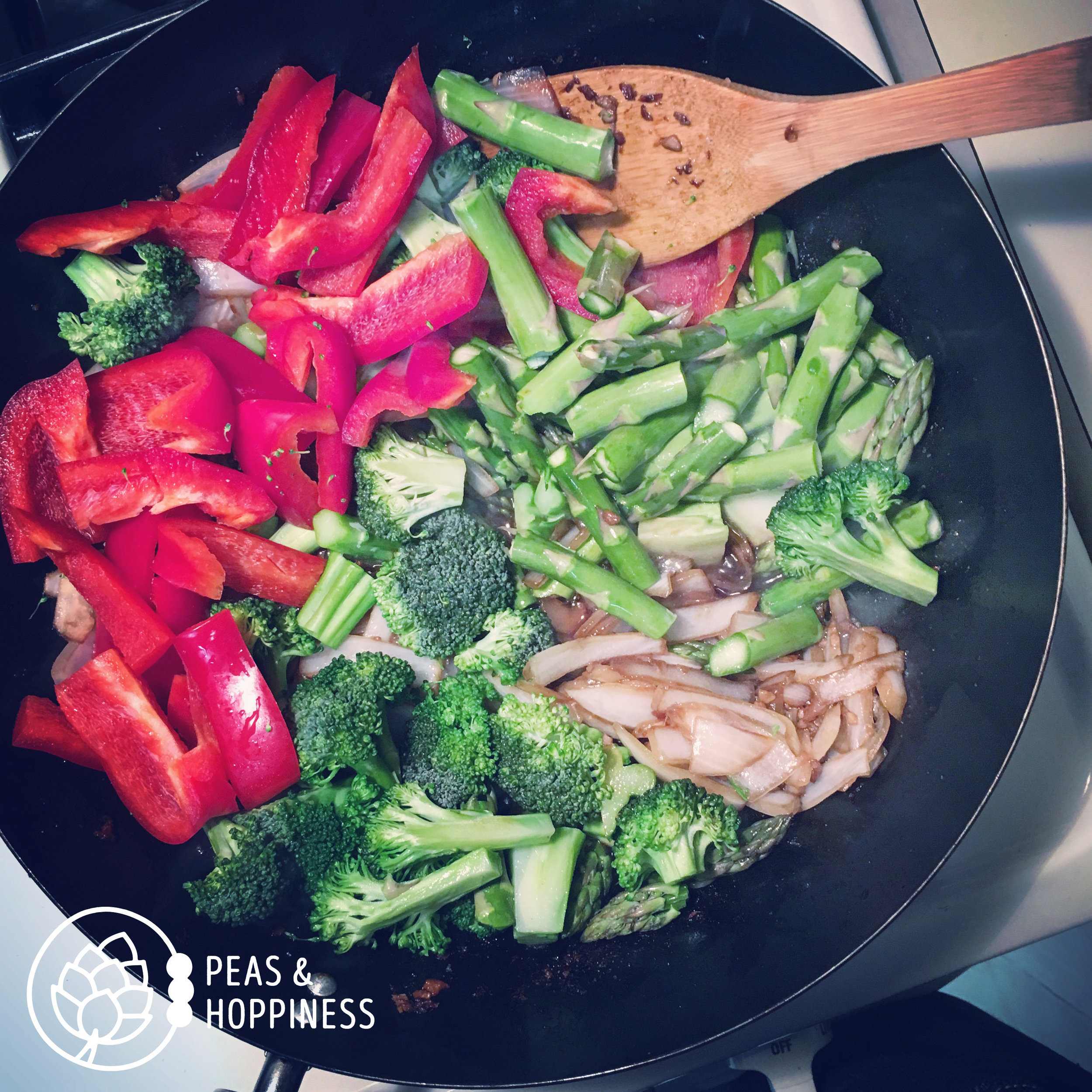My friend, put down that bagel and walk away. Don’t you know carbohydrates are evil?
Low-carb diets have become increasingly popular in the last several decades, but the ketogenic diet takes it to the next level. Today we explore the ins and outs and pros and cons of this restrictive, effective diet.
What is the Ketogenic Diet?
The ketogenic diet (or “keto” as it’s affectionately known) is an ultra-low carb diet in which a person consumes no more than 20-50 grams of carbohydrates (not including fiber) per day. To put this in perspective, a medium banana has about 30 grams of carbohydrates; a standard slice of bread has about 15 grams. This severe restriction of carbohydrates changes the body’s metabolism of how it attains energy from food.

Tip #1 for practicing a keto diet: eat your non-starchy veggies! Try this recipe for Roasted Broccoli
Carbohydrates – specifically glucose – are usually the body’s preferred energy source. After eating, some glucose is stored in muscle and the liver as glycogen, but it’s a relatively small amount. Thus, in fasting or starvation the body relies on its long-term energy storage: fat.
The ketogenic diet mimics how the body adapts to periods of fasting (i.e. starvation) when carbohydrates are not readily available; it switches from glucose as the primary energy source to using fat. Normal metabolism of fat requires glucose to break down fat completely. If glucose isn’t present, fat metabolism leaves behind three ketones: beta-hydroxybuterate, acetoacetate, and acetone (Kalra, et al).
Once a person has restricted carbohydrates long enough, these ketones build up in the bloodstream and the person enters a metabolic state called ketosis. At this point levels of ketones are detectable in the bloodstream and urine. To ensure he/she is following the ketogenic diet closely enough, a person can check these levels of ketones using Ketostix.

A delicious, easy, low-carb meal: grilled salmon and veggies
Although the brain, muscles, and organs usually prefer to run on glucose, they also can use ketones as energy. Research has shown even in exercise – where traditionally a high-carbohydrate diet is encouraged – the keto diet can benefit athletes if they train their bodies to use ketones (Chang, et al). With recent research also showing improvements in cardiovascular outcomes and blood glucose control, you may have even heard your doctor consider this diet for you (Brehm, et al, Dashti, et al).
A Brief History of the Ketogenic Diet
The ketogenic diet originated as medical treatment of disease rather than weight loss. Before keto, fasting had been used as a treatment for epilepsy for nearly 3,000 years. Fast-forward to the 1920s when doctors began to using the ketogenic diet to treat this seizure disorder because of the way keto mimics metabolism of starvation (Wheless).
Once medications for epilepsy were developed, the ketogenic diet fell out of fashion and was largely forgotten – until recently (i.e. the early 2000s) when keto again became a common treatment for epilepsy. The ketogenic diet is now used for patients who have not had successful control of seizures with medical therapy.
As a weight loss diet, Dr. Atkins made the low-carb high-fat diet popular in the 1970s with his book, Dr. Atkins’ Diet Revolution. Contrary to the popular diet advice of the time, Dr. Robert Atkins believed the traditional high-carb, low-fat diets for weight loss didn’t work – mainly because people were hungry on these types of diets.
It turns out Dr. Atkins was right in a lot of ways, paving the way for a variety of modern low-carb, high-fat diets.

Add a little sweet to your keto diet with roasted beets and (a few) apples. Sub Splenda or stevia for sugar in this recipe for Red, White, and Blue Cheese Salad
How the Keto Diet Works for Weight Loss
It’s not fully known why the ketogenic diet is so effective, but there are several potential mechanisms by which the keto diet lends success to its dieters (Kosinski and Jornayvaz, Kalra, et al).
Possible Increased Satiety
Satiety is the feeling of fullness after eating, which of course is very important for a weight-loss plan. When calories are restricted, the body’s response is to communicate with the brain to eat more – a natural protection against starvation.
Fat and fiber are two nutrients that slow how quickly the stomach releases food into the digestive system. If the stomach stays full for longer, a person won’t feel hungry as soon. One of the proposed mechanisms for keto’s success is the high amount of fat in the diet and subsequent reduction in hunger. Ketosis itself is also an appetite suppressant, thus multiplying the satiety effect.
There is still debate about how effective the satiety aspect is, as some studies have shown similar problems with hunger in keto followers who practiced calorie restriction (Nymo, et al). However, in comparison to many other weight-loss diets hunger is less of an issue with the ketogenic diet.

Low-carb meal at a restaurant in Germany – proving you *can* eat keto wherever you go, as long as you’re creative! Swap the beer in the background for a gin and diet tonic for a true keto-friendly meal
Retained Resting Metabolic Rate
The Resting Metabolic Rate (RMR) is the amount of energy needed to keep the body functioning at a basic minimum (like the energy needed for the lungs to breath and the heart to beat). That is, RMR is the number of calories you burn if you’re curled up on the couch blogging all day – not counting extra activity such as walking around or exercising.
One of the major challenges with weight loss is the body becomes extra-efficient and so burns fewer calories. Part of the reason for this is that as a person loses weight, he/she also loses muscle mass. Because muscle burns more calories even at rest, decreased metabolism follows muscle loss.
Some studies have shown the ketogenic diet actually preserves lean body mass (i.e. muscle) as a person loses weight – as long as the person is simultaneously engaging in strength-training exercise (Chang, et al). Thus keto diet plus resistance training can preserve metabolism during weight loss.
Increased Thermic Effect of Food
The thermic effect of food is the amount of energy (i.e. calories) it takes for the body to digest food. The calories in some food – such as juice or white pasta – are readily available with minimal digestion. Other calories are much harder for the body to obtain – such as calories from vegetables. This explains why you’ve probably heard the foods like celery are actually net negative calories: it takes more calories to digest than the amount of calories in the food itself.
The ketogenic diet of course eliminates simple carbohydrates which have high net calories. In addition to this, the effect of ketosis and the lack of external glucose means the body must use energy to transform other substances into glucose in a process called gluconeogenesis.
gluco = glucose
neo = new
genesis = make
gluconeogenesis = make new glucose
In order for fat to fully break down, the body must have glucose. So if a person doesn’t take in enough carbohydrates to break down into glucose, it forces the liver to transform protein into glucose. Doing so takes energy – thus burns calories (Kalra, et al).
Other Health Outcomes
There have also been cardiovascular benefits shown for low-carb, high-fat diets including improving the cholesterol balance: keto can increase HDL (the “Happy” good cholesterol) and decrease LDL (the “Lousy” bad cholesterol).
Because high carbohydrate intakes lead to a spike in blood glucose, followed by a spike in insulin and ultimately triglyceride production (see: The Tale of a Soda Pop), limiting the amount of carbohydrates reduces both blood glucose levels and triglycerides (Kosinski and Jornayvaz, Dashti, et al).
Although blood lipid levels show excellent promise in supporting heart health, the long-term health effects of ketosis are still largely unknown so caution with the diet is still recommended.
What Happens in the Long-Term with Keto (and Precautions to Take)
As you may be able to tell, the ketogenic diet is incredibly strict. To maintain ketosis, almost all sources of starches and sweets must be eliminated. This lists includes pasta, bread, potatoes, and sweets – but also includes “healthy” foods such as fruit, beans, and whole grains. Because of the restrictive nature, many people find it difficult to maintain long-term.

Delicious low-carb stir-fry. Serve over riced cauliflower instead of a grain to make keto-friendly Chinese cuisine!
The ketogenic diet is also deficient in several vitamins and minerals, so supplementation of several micronutrients are important for anyone following this diet. These include calcium, vitamin D, magnesium, selenium, zinc, and phosphorus (Kalra, et al).
Persons with Type 1 Diabetes (the type of diabetes in which a person’s pancreas doesn’t make any insulin) should be extremely careful with this diet. Although ketosis is a safe and natural response to the lack of dietary carbohydrates (Gomez-Arbelaez, et al), diabetic ketoacidosis (DKA) can be extremely dangerous and life-threatening. There is a fine line between ketosis and DKA which a person with type 1 diabetes should balance very carefully (and with the guidance of a healthcare professional).
There are also certain medications that can make ketosis dangerous, including a class of medication used for people with Type 2 Diabetes: SGLT-2 inhibitors (brand names: Invokana, Farxiga, and Jardiance). These medications can increase the risk of DKA generally, but in combination with an ultra-low carb diet should be monitored very carefully. Talk with your doctor/dietitian/diabetes educator before pursuing this type of eating plan if you take these medications.
For most people, the ketogenic diet has been found safe with no dangerous change in the acid-base balance which is the primary concern in DKA (Gomez-Arbelaez, et al). Even many types of athletes can safely follow this diet as long as they train their body to use ketones. However, too much exercise too soon before adaptation can cause low blood sugar, reduced performance, and fatigue. Once properly adapted, studies have shown endurance athletes are able to maintain muscle glycogen stores and recover well after exercise while in ketosis (Chang, et al).
Ketogenic Diet: Overall Grade
Weight Loss: Grade A
Maintenance: Grade D
Study after study shows the effectiveness of the ketogenic diet in weight loss. It’s generally a simple diet to follow – there is no need to weigh foods, measure portions, or count calories as long as a person avoids major food groups which contain carbs.
However, to remain in ketosis, a person must severely restrict carbohydrates – meaning no bread, pasta, fruit, potatoes, or sweets. Even carbohydrates from beans and non-starchy vegetables must be counted.
This level of restriction makes it difficult for many people to enjoy social aspects of eating. As soon as enough carbohydrates are introduced, it throws the body out of ketosis and requires a person to be even more strict in the following days to enter ketosis again.
As such, the ketogenic diet can be a helpful tool for initial weight loss, but results are mixed for whether or not followers of the keto diet are able to maintain weight loss after stopping the diet (Kosinski and Jornayvaz). As with all “diets,” finding the balance of healthy eating for long-term weight maintenance is key.

Roasted Asparagus. Who said low-carb isn’t delicious?
So I leave you with a keto-friendly blessing: May your carbs be few and your ketostix always be the right color after you pee on them.
With love from Peas and Hoppiness.
Want help with your nutrition?
Sources
Brehm, B J, et al. “Effects of a low carbohydrate, ketogenic diet on body weight and cardiovascular risk factors.” Poster Session: Professional Practice/Community Nutrition and Public Health, vol. 101, no. 9, Sept. 2001, p. A48.
Chang, Chen-Kang, et al. “Low‐Carbohydrate‐High‐Fat Diet: Can It Help Exercise Performance?” Journal of Human Kinetics, vol. 57, 2017, pp. 81–92., doi:10.1515/hukin-2017-0025.
Dashti, Hussein M, et al. “Long-Term Effects of a Ketogenic Diet in Obese Patients.” Experimental & Clinical Cardiology, vol. 9, no. 3, 2004, pp. 200–205.
Gomez-Arbelaez, Diego, et al. “Acid–Base Safety during the Course of a Very Low-Calorie-Ketogenic Diet.” Endocrine, vol. 58, 15 Sept. 2017, pp. 81–90., doi:10.1007/s12020-017-1405-3.
Gomez-Arbelaez, Diego, et al. “Resting Metabolic Rate of Obese Patients under Very Low Calorie Ketogenic Diet.” Nutrition & Metabolism, vol. 15, no. 18, 2018, doi:DOI 10.1186/s12986-018-0249-z.
Kalra, S, et al. “Ketogenic Diet in Endocrine Disorders: Current Perspectives.” Journal of Postgraduate Medicine, vol. 63, no. 4, 2017, pp. 242–251., doi:10.4103/jpgm.jpgm_16_17.
Kosinski, Christophe, and François Jornayvaz. “Effects of Ketogenic Diets on Cardiovascular Risk Factors: Evidence from Animal and Human Studies.” Nutrients, vol. 9, no. 5, 19 May 2017, p. 517., doi:10.3390/nu9050517.
Nymo, S, et al. “Timeline of Changes in Appetite during Weight Loss with a Ketogenic Diet.” International Journal of Obesity, vol. 41, no. 8, 2017, pp. 1224–1231., doi:10.1038/ijo.2017.96.
Saslow, Laura R., et al. “Twelve-Month Outcomes of a Randomized Trial of a Moderate-Carbohydrate versus Very Low-Carbohydrate Diet in Overweight Adults with Type 2 Diabetes Mellitus or Prediabetes.” Nutrition & Diabetes, vol. 7, no. 12, 21 Dec. 2017, doi:10.1038/s41387-017-0006-9.
Wheless, James W. “History of the Ketogenic Diet.” Epilepsia, vol. 49, no. Suppl. 8, 2008, pp. 3–5., doi:10.1007/978-1-59259-808-3_2.
5 thoughts on “Keto Burrito: The Ketogenic Diet (Hold the Tortilla)”
Thanks for this really great explanation and thoroughly cited sources!
https://www.gimletmedia.com/science-vs/ketogenic-diet-should-you-do-it#episode-player … A timely podcast/blog post combo!
Is there a recommendation as to what kinds of fats to increase with this diet? Saturated vs unsaturated, or is it irrelevant? Do people on this diet tend to get enough fiber? And is this diet expensive to be on?
Great questions! The type of fat to increase is a tricky question; in general, calorie restriction of any type will improve an array of cardiovascular outcomes – at least initially. The question then becomes: what is best in the long-term?
I’m not sure I can point to keto-specific research for the type of fat, but it’s well known that saturated and trans fats are linked to increased LDL (lousy) cholesterol. Thus, if a person wants to healthfully AND low-carb, it’s important to choose healthier fats (olive oil, avocado, nuts) and include lots of veggies. To get enough fiber, one needs to be intentional about including lots of non-starchy veggies in the diet; if focusing solely on meat and protein its easy to fall below the daily recommended amount of 12g fiber for every 1,000 calories.
Lack of sufficient fiber causes some of the side effects typical of this diet – namely, constipation. Additional side effects can include "brain fog," fatigue, and general lethargy, especially when the body is first learning to run on ketones rather than glucose.
As to the expense, this type of diet usually forces you to eat higher on the food chain (i.e. more animal products) and thus is usually more expensive. Beans and lentils are a great source of vegetarian protein, but because they contain carbohydrates it’s hard to include enough of them.
As with all "diets," the answer of health is not black and white. As a dietitian, I can certainly guide a person to make healthy choices while following keto, but simply eating low-carb doesn’t guarantee a complete, balanced diet. Here is an example of healthier vs. not-as-healthy days of keto:
Healthier:
Breakfast: 2 eggs + 3 c. spinach sauteed in olive oil
Lunch: Chicken breast, avocado, walnuts & large salad with olive oil & vinegar
Dinner: Lean hamburger (no bun), grilled asparagus & mushrooms
Snacks: Cucumbers dipped in buffalo sauce, pumpkin seeds
Not-so-healthy:
Breakfast: 2 eggs and 2 slices bacon
Lunch: Chicken breast, cheddar cheese, salad, blue cheese dressing
Dinner: full-fat hamburger, cheese, bacon
Snacks: beef sticks, sugar-free jello with whipped cream
Thanks for your great questions! Can’t wait to listen to that podcast!
Would you recommend this diet for someone with Type 2 diabetes recovering from coronary heart disease and a quadruple bypass? A1C at 6.5.
Unfortunately I’m not able to give specific nutrition recommendations; I would recommend talking with your doctor/dietitian before starting a diet.
Generally speaking, a low-carb diet can be very beneficial in controlling blood glucose levels and research has shown positive effects on cardiovascular outcomes, as well. However, everyone’s dietary needs are different – and so I have questions about medications the person is on, other health history, and current lab values before I can give specific information.
If you or someone you know is looking for individualized nutrition advice, check out my individual nutrition consultation options – I might be able to help you out!